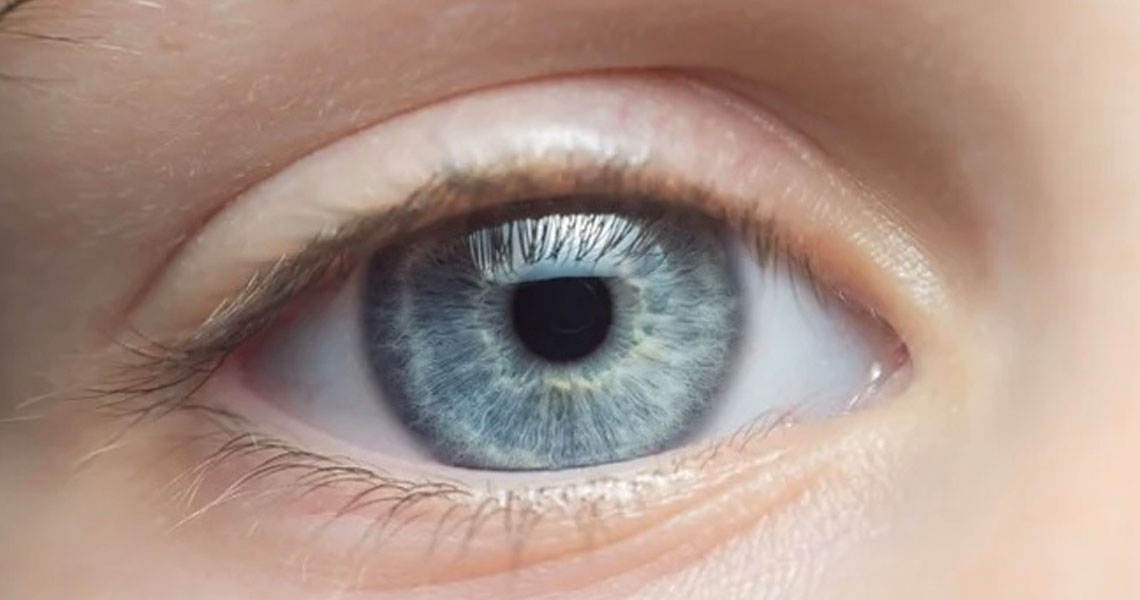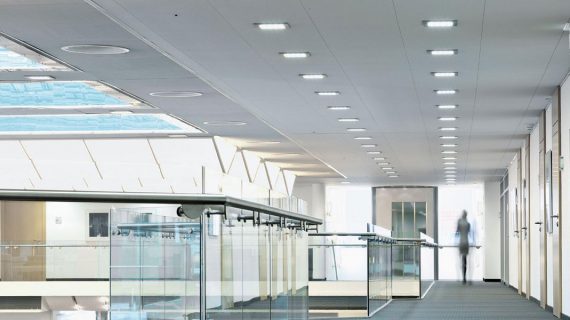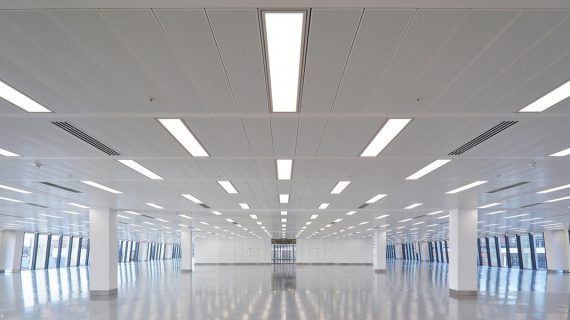Let’s take care of our eyes, choose the right lighting
In the autumn and winter, when daylight is getting shorter, more and more of the day is spent indoors, reading, watching TV, and staying at the computer and the Internet. The eyes get tired, so they need to be protected. Ilze Strautmane, an ophthalmologist, and Andis Čeksters, a lighting specialist, tell us how to choose the right lighting and what to pay the most attention to.
How eyes sees
The eyes are said to be the visible part of the brain. Others say that the eyes are a mirror of the soul. The eyes and brain are a single system. The eyes receive information and turn it into nerve impulses. The eyes are no longer directly involved in processing information. When light enters the retina (the retina is a layer of nerve tissue), it is received by light receptors and transmits an impulse to the optic nerve.
When we look into the distance, our eyes are relaxed, when we look at close, small objects or the TV, our eyes are tense. The viewing of objects at different distances is ensured by the accommodation mechanism. It involves an elastic lens, which is a “device” in the ligaments and connected to the muscle. Changing the tightening tension also changes the curvature of the lens and its refractive power. If there is any disturbance in the operation of this mechanism, the image will focus closer or farther from the retina and will be blurred by the eye.
Light is received by two types of receptors. In the center of the retina (macula) is the so-called cob, which provides central vision, visual acuity, color, perception of the shape of objects.
The other receptors are called rods, and they work in the periphery of the retina to provide vision at dusk, vision at night, and orientation in space. If the illumination is not less than 25 to 0.3 lux, the operation of the coulters ensures day vision. As the illumination decreases from 25 to 0.3 lux, there is a transition from day vision to twilight. If the lighting is less than 0.3 lux, only the sticks work and there is a colorless twilight vision.
In low light, all eye resources are mobilized to get a clear picture. Unsuitable light and too active use of the eyes make the eyes so tired that they start to feel discomfort. Such eye discomfort in medicine is called tired eye syndrome (symptoms: pressure in the eyes, dull pain in the eye and eyebrows, headache, blurred image). This is facilitated by various activities, such as sewing, reading in inappropriate lighting and in the wrong position, driving (especially during the dark hours of the day), and excessive computer use.
If there is no good lighting and you have to do work that requires focusing on small objects, your eyes will quickly strain and get tired.
Recommended indoor lighting
Sunlight gives us the opportunity to see. The sun is a natural light, as the warm glow most can be enjoyed in the summer. When autumn and winter come, there is less sun, so you have to use artificial light sources – electric lighting. It is important to notice that the lighting is suitable for what is being done. The nature of the work and the characteristics of the individual vision must be taken into account when choosing suitable room lighting. The recommended lighting level in the apartments is from 100 to 300 lux, for finer works (for example – 500 lux for reading).
In homes, luminaires are usually placed on the ceiling in combination with various wall, table or floor lamps. If additional lighting is used, it is advisable to focus directly on where the gaze is, if it is a table, then on a table surface, if it is a knit – then on a knit. The height of the lamp should be such that the light does not shine directly on the eyes but on the work surface and preferably from left to right (right-handed) to prevent shadows. The lamp may be at eye level, but the light beam must fall below that level.
Less active lighting can be used in non-active areas. It is recommended in bedrooms. For active activities, such as sports centers, it is recommended to use ACTIVE lamps, which most closely imitates daylight and make you feel like you are outdoors. Often, ACTIVE bulbs are replaced with much cheaper but non-compliant bulbs. Lamps with warmer (yellow) light should be used in rooms where calmer operations are expected.
The color temperature of the light emitted by the lamp is indicated on the lamp label (depending on the color temperature measured in Kelvin, the light may be yellow from 2700 to 3000 K, white (4000 K) or bluish white (5000 K and above)).
Light bulbs can be very different. Standard lamps are lamps which emit only the basic components of the visible spectrum of light. They are suitable for corridors and other similar rooms where the stay is short. The bulbs that are closest to daylight are used in everyday life. Depending on the importance of the rooms, it is still possible to choose a warmer or cooler tone, for example, in rooms where we spend most of the day – cooler, in apartments – warmer tones. The wider the range of colors contained in the lamp, the more the light emitted by the lamp will resemble daylight and the less tiring it will be on the eyes. It should be remembered that there are also various special purpose lamps that we use for sunbathing, with increased ultraviolet radiation, anti-bacterial lamps that are used for room disinfection. Such light is not only dangerous for the eyes, but for the whole body. It is not recommended to be in the radiation zone during lamp operation.
Natural and artificial light
Engineers try to make artificial lighting (incandescent, halogen, fluorescent) as close as possible to natural, but it cannot replace natural lighting. Artificial lighting, nowadays, is made up of specialized, tailored to specific needs.
If the color resolution and tonality of the room are important, the lighting should be very close to daylight. If the shade of clothing assessed in the store looks different in daylight, it means that the norms have not been followed.
PLEASE NOTE:
- eye fatigue is caused by increased drying of the tears, which is facilitated by a decrease in the frequency of blinking of the eyelids. In the relaxed position, to moisturize the tear film, the eyelid closes on average every 3-6 seconds;
- infrequent blinking of the eyes can cause dry eye syndrome, which is exacerbated by excessive exposure to dry air. This is facilitated by central heating system, air conditioning, dusty rooms;
- the ability of the human eye to produce tears during a lifetime decreases, so the risk of dry eye is higher in the elderly;
- Contact lens wearers also often complain of dry eye symptoms, as they cause tear film dysfunction, increasing the risk of dry eye surface;
- when working in a place where concentration and viewing are required, it is necessary to rest your eyes every 30 minutes. Do this by looking into the distance;
- it is desirable to close your eyes to rest them during the thought. It is desirable to look away and look into the distance to change the focus of vision;
- it is desirable to blink regularly, for example, while reading or concentrating on work. When blinking your eyes, it is advisable to close your eyelids completely.
Tips for planning lighting
- the choice of room lighting must take into account the nature of the work and the peculiarities of individual vision;
- the recommended average lighting level in the apartment is from 100 to 300 lux;
- lighting in at least 500 lux must be selected in areas intended for specific work (for example reading, knitting);
- even less lighting (taking into account lux.) can be used in non-active rooms, such as bedrooms;
- in living rooms, luminaires shall, for the most part, be located on the ceiling in combination with a wall, ceiling or floor lamp;
- additional lighting is desirable to focus on the place where the gaze is focused – table top, knitting, book, for example.




